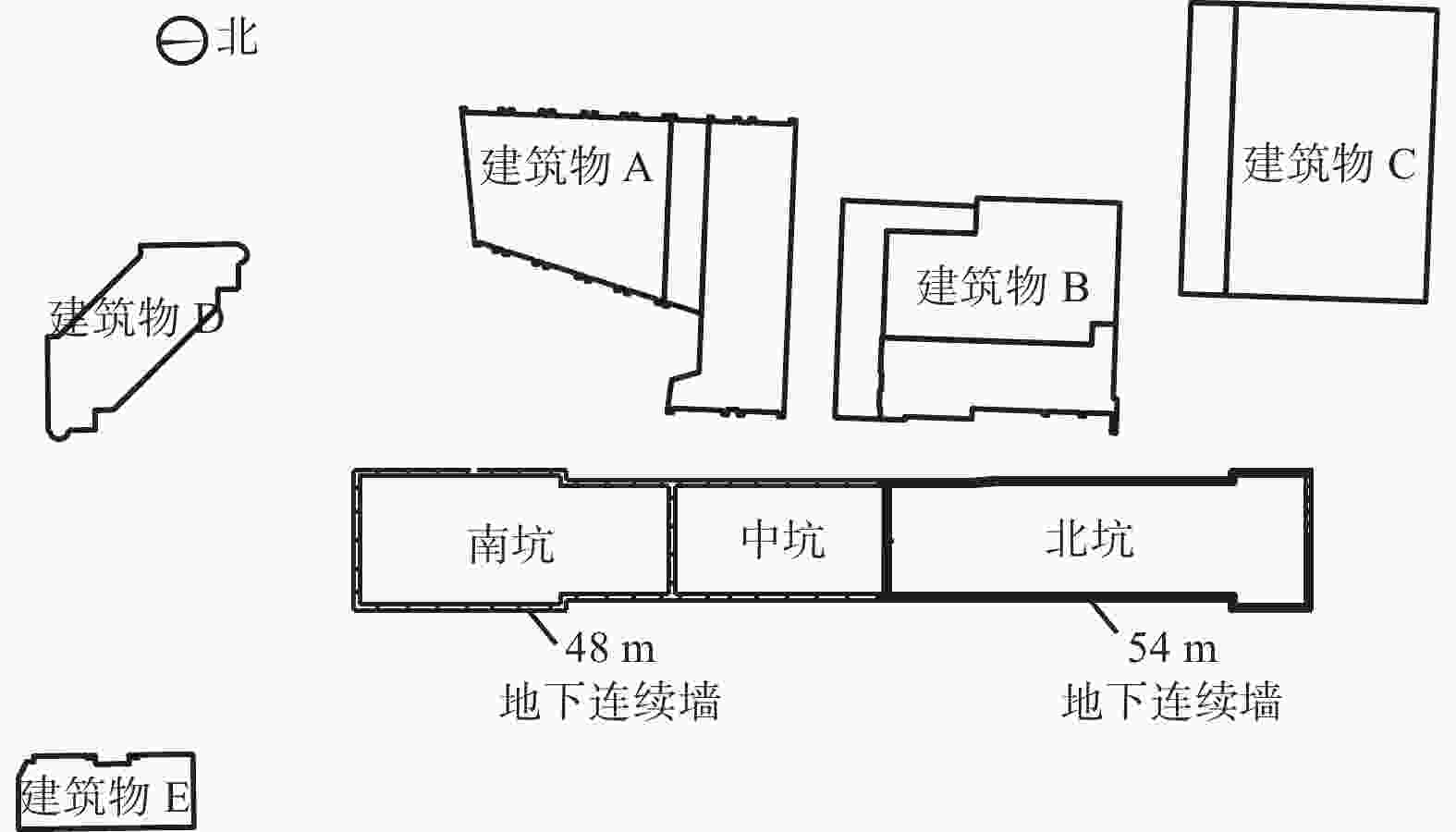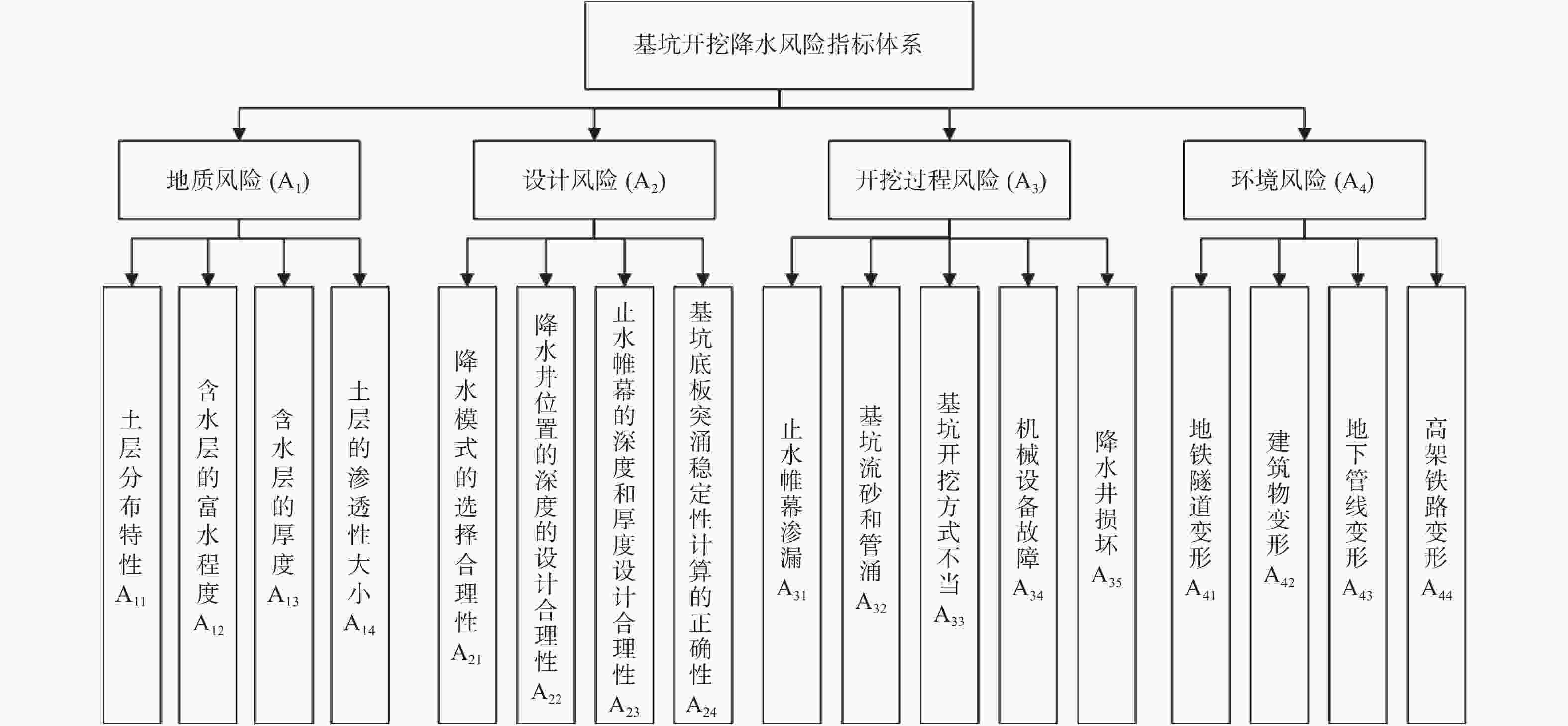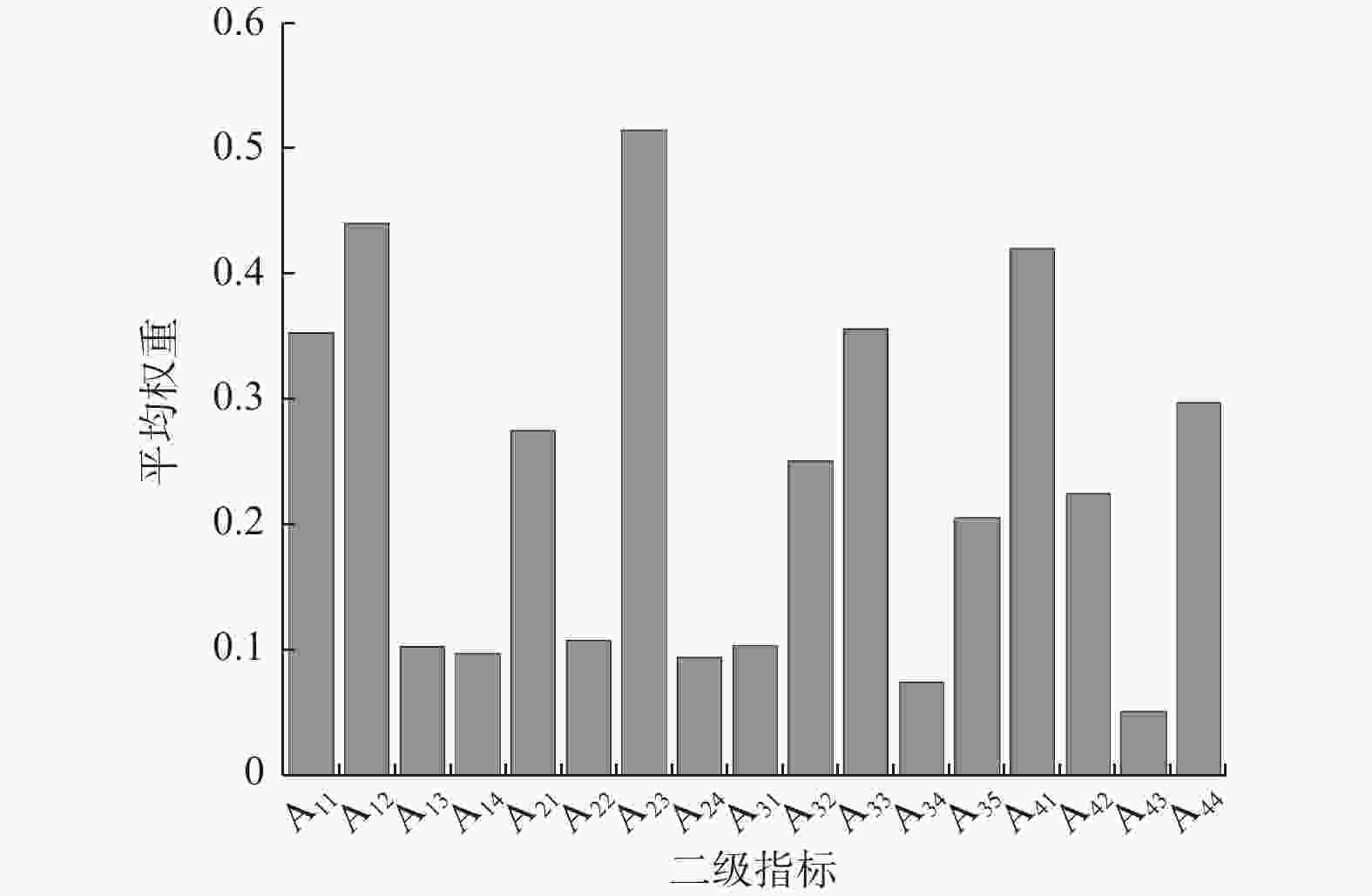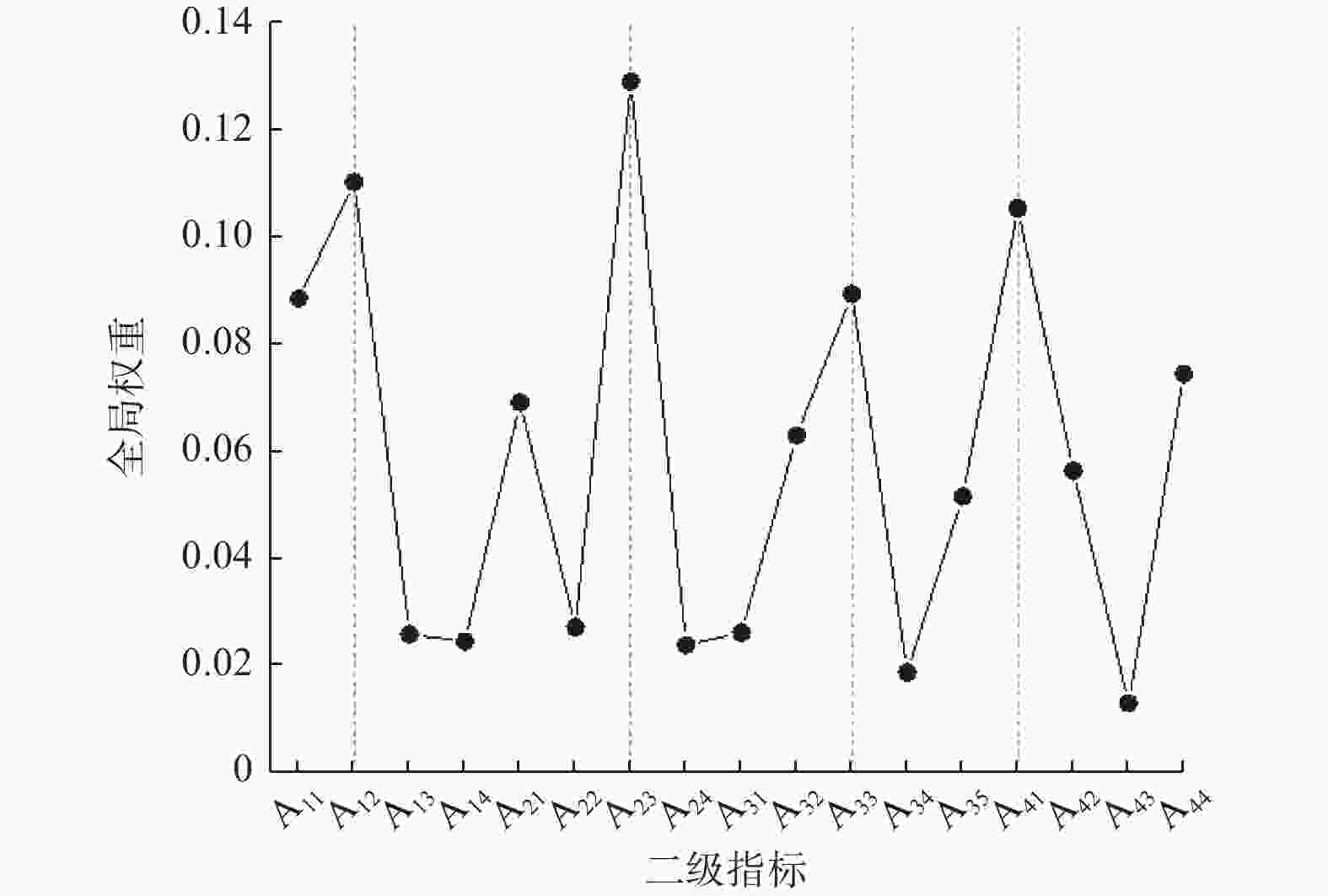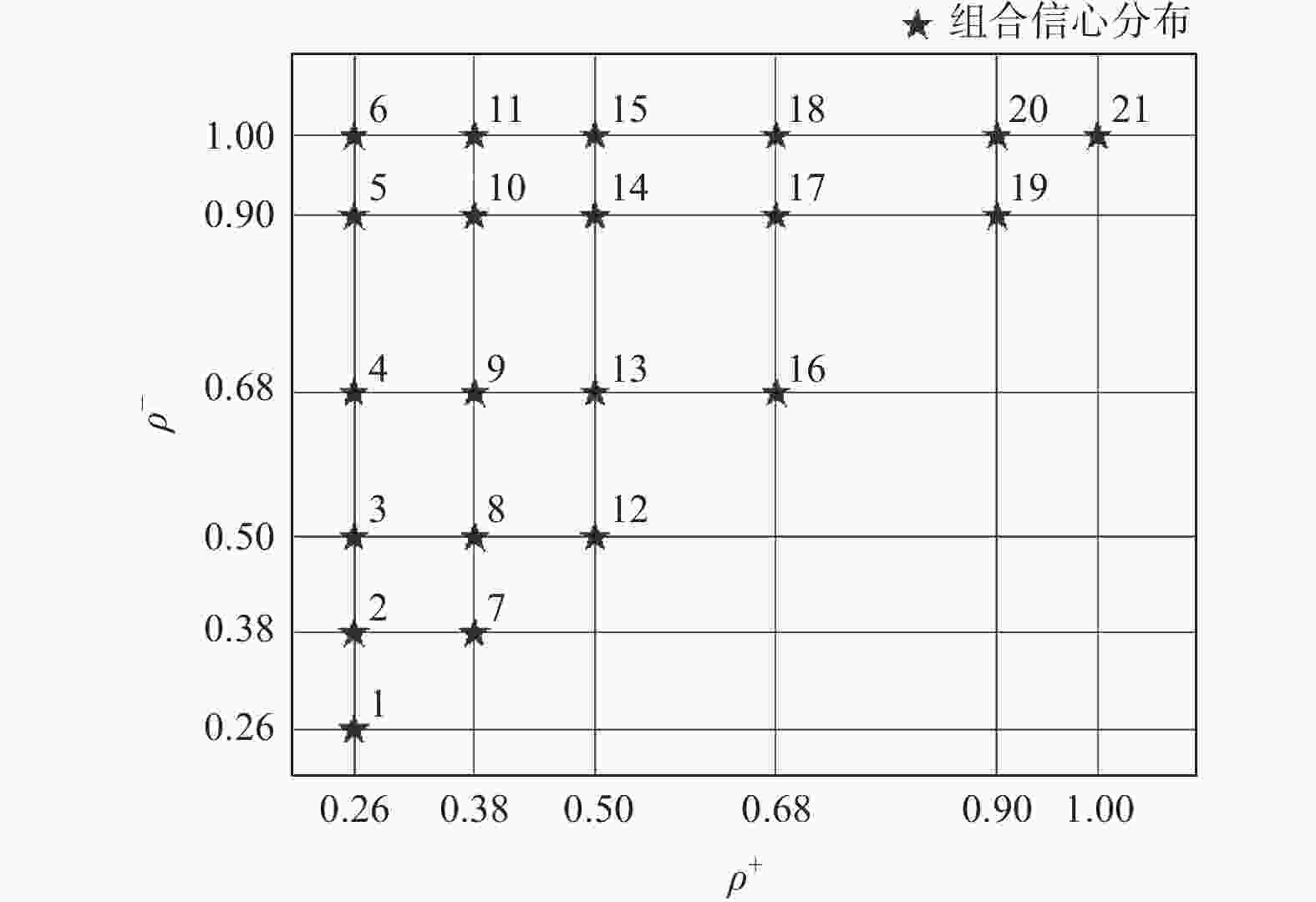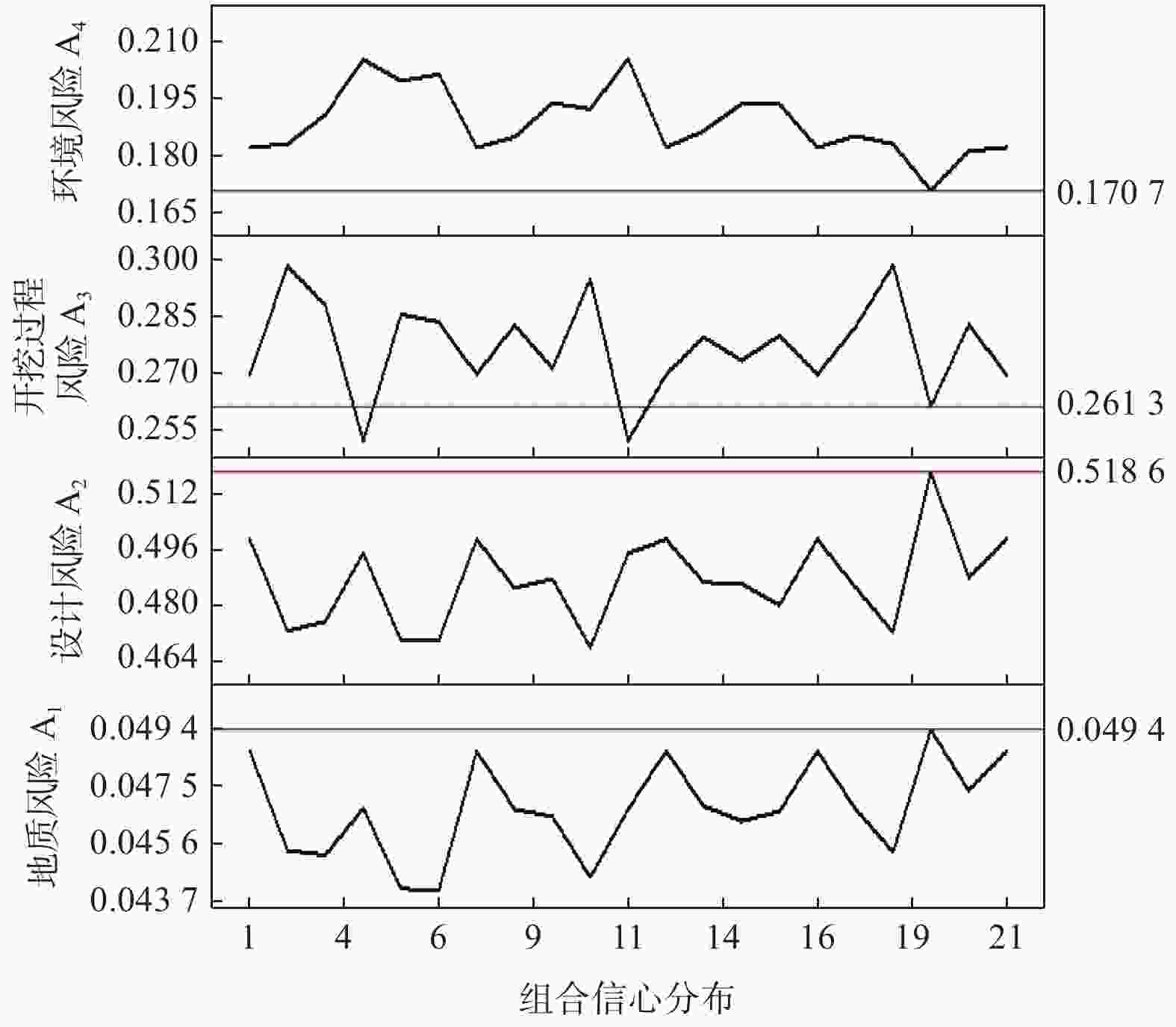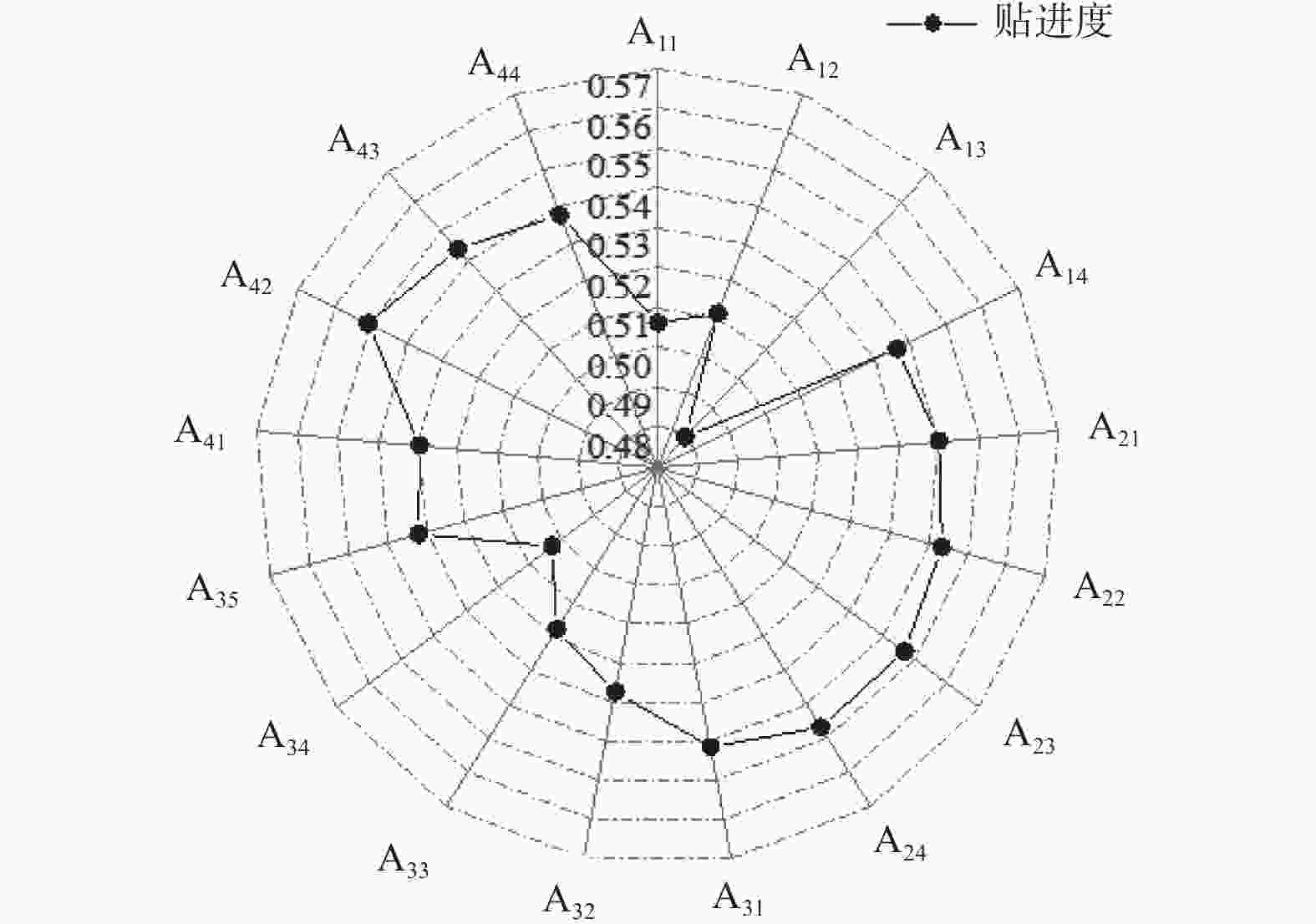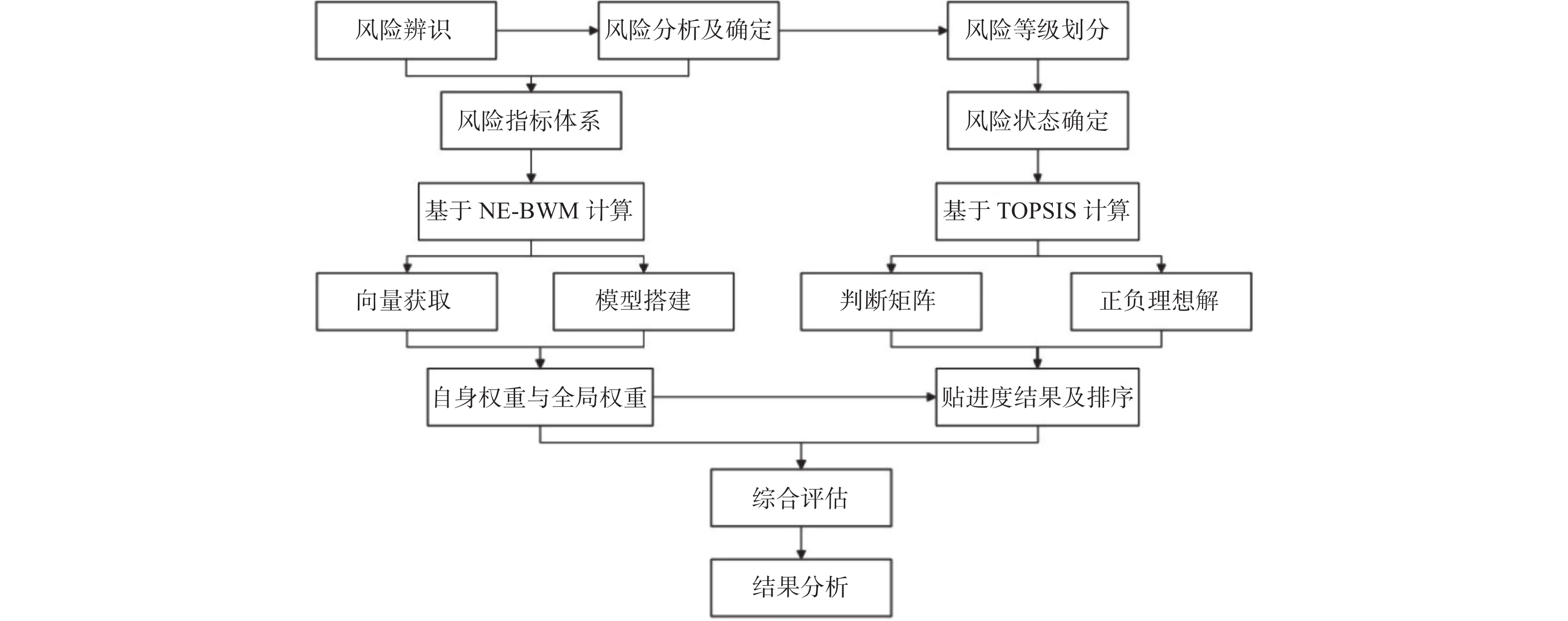Risk assessment of excavation dewatering in foundation pits based on NE-BWM and TOPSIS
-
摘要: 基坑开挖降水是基坑工程中必不可少的关键环节,其存在许多潜在风险。为保证基坑开挖降水时基坑的安全,基于中性增强最优最劣法(NE-BWM)与理想解相似度顺序偏好法(TOPSIS)建立一种综合风险评估模型。以上海某基坑开挖降水工程为研究对象,搭建风险指标体系后对该综合风险评估模型进行实例验证,同时对评估结果进行敏感性分析。研究结果表明,该方法能够获得比较客观、可靠的评估结果,且与工程实际情况相符合。
-
关键词:
- 基坑降水 /
- 风险评估 /
- 中性增强最优最劣法 /
- 理想解相似度顺序偏好法 /
- 敏感性分析
Abstract: Excavation dewatering is an essential part of foundation pit engineering, but it carries many risks. To ensure the safety of the foundation pit excavation dewatering, a comprehensive risk assessment model was established based on neutrosophic enhanced best-worst method (NE-BWM) and technique for order preference by similarity to ideal solution (TOPSIS). Taking an excavation dewatering of foundation pit in Shanghai as a case study, a risk indicator system was constructed to validate the comprehensive risk assessment model, and sensitivity analysis was performed on the evaluation results. The findings show that this method can yield relatively objective and reliable evaluation results, which are consistent with the actual engineering situation. -
表 1 专家信心程度对应数值
Table 1. Corresponding values of expert confidence level
信心程度 没有信心 信心很低 信心较低 中等信心 信心较高 信心很高 绝对有信心 对应数值 0.00 0.26 0.38 0.50 0.68 0.90 1.00 表 2 风险等级量化取值
Table 2. Quantitative values for risk levels
等级 含义 量化区间 风险损失 Ⅰ 风险很低 (0,60) 很少 Ⅱ 风险较低 (60,70) 较少 Ⅲ 风险中等 (70,80) 中等 Ⅳ 风险较高 (80,90) 较高 Ⅴ 风险很高 (90,100) 很高 表 3 17项二级风险指标的等级划分与风险状态
Table 3. Classification and risk status of 17 sub-risk indicators
一级指标 二级指标 风险等级 风险状态 Ⅴ Ⅳ Ⅲ Ⅱ Ⅰ A1 A11 >90 >80 >70 >60 <60 78.500 A12 >90 >80 >70 >60 <60 79.667 A13 >90 >80 >70 >60 <60 72.833 A14 >90 >80 >70 >60 <60 85.667 A2 A21 >90 >80 >70 >60 <60 86.667 A22 >90 >80 >70 >60 <60 91.167 A23 >90 >80 >70 >60 <60 88.500 A24 >90 >80 >70 >60 <60 88.500 A3 A31 >90 >80 >70 >60 <60 87.000 A32 >90 >80 >70 >60 <60 93.500 A33 >90 >80 >70 >60 <60 81.167 A34 >90 >80 >70 >60 <60 77.833 A35 >90 >80 >70 >60 <60 84.500 A4 A41 >90 >80 >70 >60 <60 93.167 A42 >90 >80 >70 >60 <60 90.167 A43 >90 >80 >70 >60 <60 87.667 A44 >90 >80 >70 >60 <60 86.000 表 4 一级指标的权重计算结果及排序
Table 4. Weight results and ranking of primary risk indicators
风险指标 专家1 专家2 专家3 专家4 专家5 平均值 排序 A1 0.0494 0.1040 0.0580 0.1407 0.0550 0.0814 4 A2 0.5186 0.6127 0.3045 0.6552 0.2307 0.4643 1 A3 0.2613 0.2235 0.1428 0.0633 0.2275 0.1837 3 A4 0.1707 0.0597 0.4947 0.1407 0.4869 0.2706 2 信心1 0.90 0.90 0.68 0.90 0.50 信心2 0.90 0.90 0.68 0.68 0.50 RC 0.4247 0.2672 0.4630 0.3344 0.5619 表 5 17项二级指标的正负理想解
Table 5. Positive and negative ideal solutions of 17 sub-risk indicators
评价值 A1 A2 正理想解 [ 0.0217 0.1272 0.0061 0.0065 ][ 0.0182 0.0076 0.0346 0.0065 ]负理想解 [ 0.0203 0.0250 0.0064 0.0054 ][ 0.0149 0.0061 0.0275 0.0051 ]评价值 A3 A4 正理想解 [ 0.0070 0.0178 0.0224 0.0046 0.0133 ][ 0.0296 0.0154 0.0035 0.0195 ]负理想解 [ 0.0057 0.0153 0.0200 0.0044 0.0113 ][ 0.0253 0.0121 0.0028 0.0161 ]表 6 等级区间划分结果
Table 6. Classification results of level intervals
风险等级 Ⅰ Ⅱ Ⅲ Ⅳ Ⅴ 区间 (0.48 0.50) (0.50 0.51) (0.51 0.53) (0.53 0.55) (0.55 0.57) -
[1] WU Y X, SHEN S L, LYU H M, et al. Analyses of leakage effect of waterproof curtain during excavation dewatering[J] . Journal of Hydrology,2020,583:124582. [2] WU Y X, LYU H M, HAN J, et al. Dewatering-induced building settlement around a deep excavation in soft deposit in Tianjin, China[J] . Journal of Geotechnical and Geoenvironmental Engineering,2019,145(5). DOI: 10.1061/(ASCE)GT.1943-5606.0002045. [3] 范晓峰. 浅析深基坑开挖过程中可能出现的工程地质问题[J] . 地球,2019(7):89. [4] 张振中. 基于改进AHP-熵值法的地铁车站深基坑施工风险评估[J] . 现代隧道技术,2022,59(S2):13 − 21. [5] 张洋. 基于模糊层次综合评价法的城市河道综合整治效果评价[J] . 水利规划与设计,2023(11):79 − 83, 145. doi: 10.3969/j.issn.1672-2469.2023.11.016 [6] 王军. 长江漫滩地区地铁车站基坑降水风险管理研究[D] . 兰州: 兰州交通大学, 2019. [7] 陶俊. 临河条件下承压水深基坑开挖稳定性与降水风险源分析[D] . 苏州: 苏州科技大学, 2020. [8] 李曙光, 任少强, 王洪坤, 等. 地铁车站深基坑施工变形规律及安全风险评估[J] . 公路,2022,67(1):355 − 362. [9] YUCESAN M, BASHAN V, DEMIREL H, et al. An interval type-2 fuzzy enhanced best-worst method for the evaluation of ship diesel generator failures[J] . Engineering Failure Analysis,2022,138:106428. [10] 胥明, 许杰, 万友生, 等. 基于CRITIC法与TOPSIS地铁车站施工安全评价[J] . 自然灾害学报,2022,31(3):157 − 166. [11] REZAEI J. Best-worst multi-criteria decision-making method[J] . Omega, 2015, 53: 49−57. [12] VAFADARNIKJOO A, TAVANA M, BOTELHO T, et al. A neutrosophic enhanced best–worst method for considering decision-makers’ confidence in the best and worst criteria [J] . Annals of Operations Research, 2020, 289: 391−418. [13] 中华人民共和国住房和城乡建设部. 城市轨道交通地下工程建设风险管理规范: GB 50652—2011[S] . 北京: 中国建筑工业出版社, 2011. [14] 刘毅, 孙庆文, 刘贵香, 等. 地铁深基坑施工安全评估FDEMATEL-TOPSIS模型及应用[J] . 科学技术与工程,2022,22(10):4253 − 4260. doi: 10.3969/j.issn.1671-1815.2022.10.053 [15] 徐波. 基于逼近理想解排序法的基坑风险模糊识别方法[J] . 地下空间与工程学报,2022,18(2):673 − 680. doi: 10.3969/j.issn.1673-0836.2022.2.dxkj202202037 [16] 辛酉阳, 杨德磊, 方前程. 改进GRA-TOPSIS模型在装配式建筑施工风险评估中的应用[J] . 安全与环境学报,2023,23(7):2212 − 2222. -





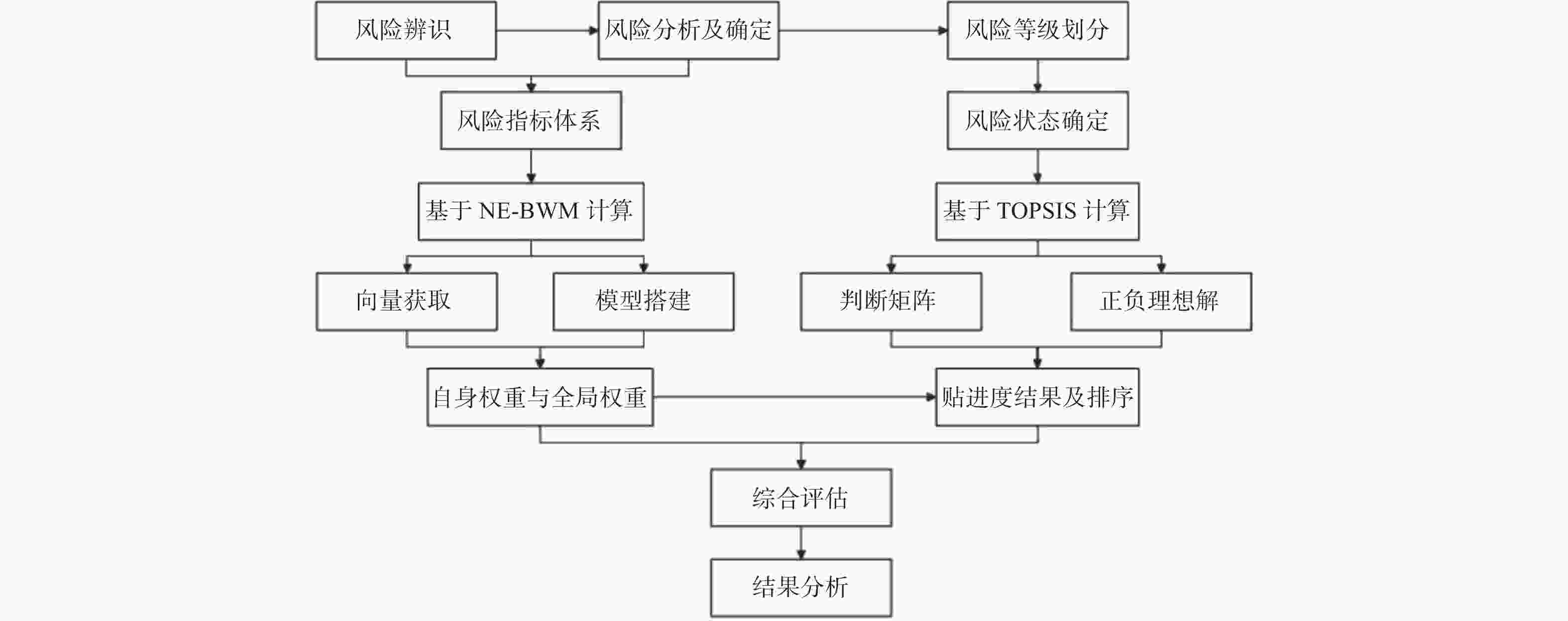
 下载:
下载:
